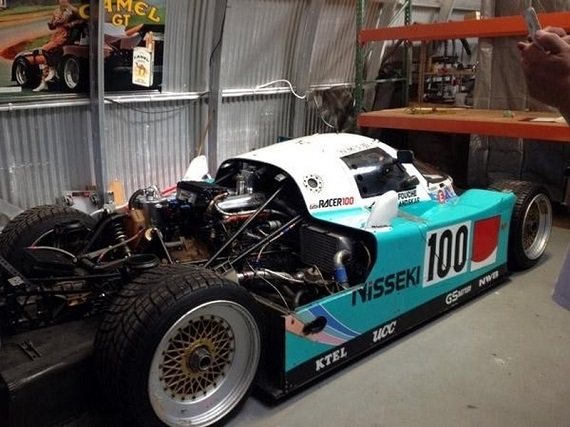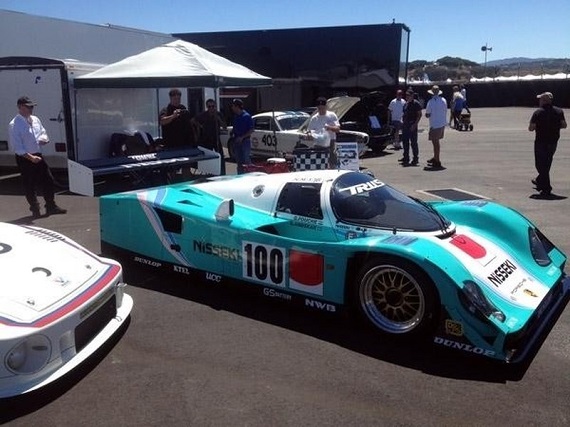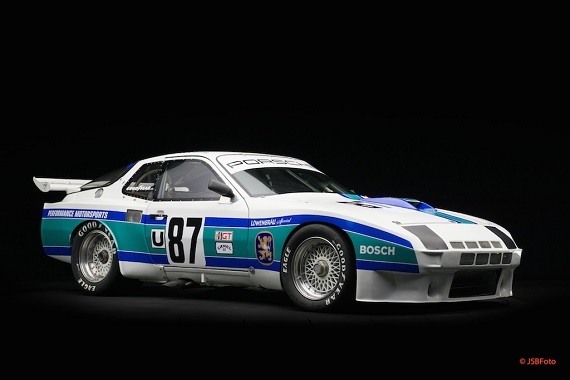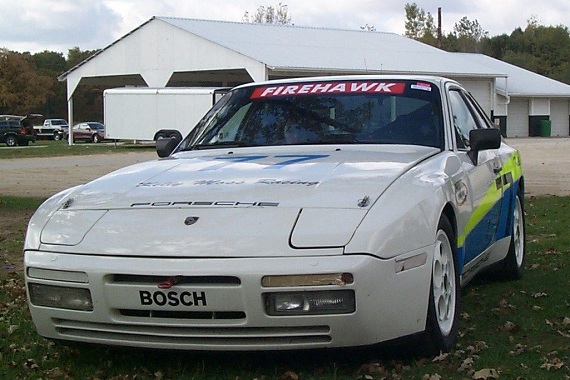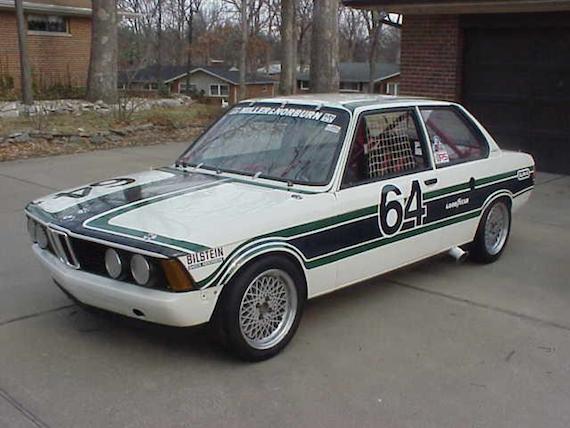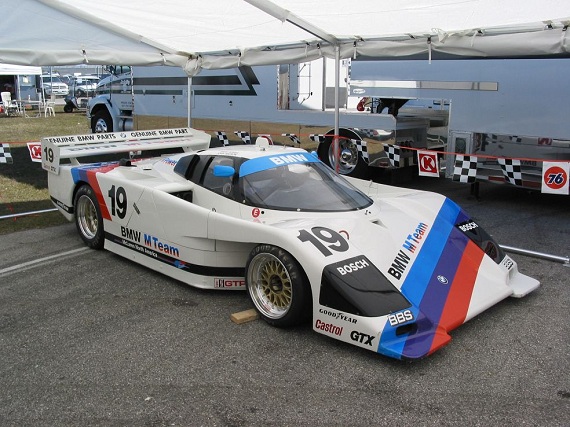When pondering this Porsche 962, I couldn’t help but try to analyze why I romanticize about the Group C era so much. For the best part of a decade, if you wanted to win in Group C, there was really only one car to drive – the Porsche 956/962. Sure, there were inter-team and extra-team battles between full factory and privateer efforts, but let’s just say that the diversity at the end of the race was not particularly staggering. Then there was attrition; both with cars and drivers, as this seriously dangerous time period moving heavily into aerodynamics revealed the fragility of not only the engineering, but the humans that attempted to control it. Yet, combining some great liveries, a swoopy, low-slung body, some gold BBS magnesium wheels (or better yet, the BBS Turbofans!) is still the most iconic period in endurance racing in my mind. This is somewhat ironic, since with the WEC today we’re witnessing what is arguably the best racing the series has ever seen with the fastest endurance cars ever produced; often in the 1980s, it was who made it to the end without breaking, crashing or running out of gas. But today, it’s an all-out 6-24 hour sprint as Porsche, Audi and Toyota take three different ethos of building and designing a “hybrid” car and bring them to fans attention. Spectacular? You sure bet it is, and there’s no guarantee of who will win. Yet, when my eyes flash across a 962, I get a flutter in my heart that I just don’t feel looking at the new generation of cars:
Tag: imsa
The late 1970s and early 1980s were a trans-formative time for Porsche. After a long string of successes with the Porsche 911 and 917 on the race track, they were moving into new territory with a series of front engined cars. Not only were these cars appearing on the race track, though; Porsche intended the 928 and 924 to be the replacements for its aging 911/912 lineup. The result was a special time for water-cooled fans, as Porsche spent a considerable amount of time and resources in between the end of the 917 project and the beginning of the new 956 project on the front engined 924. In order to tie the model to performance and wins on the track, Porsche undertook an ambitious racing schedule, entering the 924 in everything from showroom production-based “D-Production” in SCCA to the World Rally Championship and Le Mans. The resulting lineup of impressive turbocharged 924s have become legendary, but ultimately they’re much more rare to come across than their 911/934/935 counterparts. Still, in the early 1980s they were cutting edge – 2,000 lbs, 400+ horsepower and massive flares hiding 935-spec BBS center-lock magnesium wheels. Sound awesome? You better believe it:
CLICK FOR DETAILS: 1981 Porsche 924 Carrera GTR on eBay
1 CommentIn a recent discussion regarding why values of the E30 M3 had taken off while the Porsche 924/944/968 had remained affordable, one of the comments suggested that the reason was because the Porsches did not enjoy the race pedigree than the M3 did. While one can’t deny the success of the E30 M3 on track and even in rally venues, that answer belies the many races and different series that the 924 and 944 competed in. Indeed, the development of the 944 and 944 Turbo motors came about in part because specifically of the race programs. In everything from local SCCA races straight up to the big dogs at Le Mans, the Porsches were racing right beside some of their more famous 911, 935, 936, 956 and 962 brethren. On top of that, the factory also fronted 924 Carrera GTS cars in the World Rally Championship, many of those that were involved later to move to Audi’s program. Then there were the one-make 944 and 944 Turbo Cup races around the world. But into the late 1980s and early 1990s, one of the hottest contested, affordable race series in the U.S. was the “Firehawk” series put on by IMSA and the SCCA. One of the more competitive cars in those race series were the late 944S2 and 968 models, offering serious reliability, surprising speed and excellent balance to make a fantastic race car. One of the original 944S2 Firehawk cars is up for sale today:
CLICK FOR DETAILS: 1990 Porsche 944S2 Firehawk on eBay
Comments closedThe E21 might have been the first BMW badged as a 3 series, but it is one of those rare instances where its successor became wildly more popular than the original. But, given that E30 prices are on the move, perhaps the E21 will become the new affordable BMW classic. This particular 320 is an early one, as production commenced in 1975. The E21 wasn’t the most visible BMW in motorsport, but it did make appearances in both the Deutsche Rennsport Meisterschaft (DTM) and Group 5 racing, where it would succeed the 3.0CSL. The E21 was also active in IMSA, and this particular 1975 320 was the first of its kind to win a race in that series.
CLICK FOR DETAILS: 1975 Miller & Norburn Alpina IMSA RS 320 on BMWCCA Classifieds
1 CommentFor German car fans, Porsche so defined endurance motorsports that BMWs serious efforts in the late 1970s and early 1980s often go overlooked. But if you really wanted to go racing with the big boys in the 1980s and the premium rides from Zuffenhausen were out of your reach, you might just have looked towards March engineering for the solution. March was cutting edge then, a staple in the 1970s F1 scene with some unorthodox designs. With the new prototype categories in the 1980s, March produced a series of prototypes that were developed out of a customer BMW M1 that March modified. After some development, the March 83G and later 86G proved not particularly competitive to the much more highly developed 956/962s, but did win the 1984 Daytona 24hrs with Andial Porsche power. BMW also signed up with March for a run at IMSA GTP with a development of the 320i Turbo Group 5 and Formula 1 engine producing up to a reported 800 horsepower. In qualifying trim for Formula 1, these M12/13 motors could twist around 1,400 horsepower out of that small displacement. With Formula 1 and sports car racing legends David Hobbs and John Watson amongst the ranks of drivers, it looked like a sure bet for some wins. It was for naught, though, as Porsche and later Nissan and Toyota dominated IMSA into the 1990s. BMWs efforts are nearly forgotten, and that spells value in the used prototype market today:
